Хаас за Сингапур
Ромен Грожан:
Because the Singapore Grand Prix is at night, is there a heightened sense of speed?
It’s actually easier at night because the lights never change. The luminosity is always the same. You stick with the same visor, and driving at those speeds in those conditions is absolutely fine.
Can you describe the atmosphere generated by a night race? Is there a heightened sense of excitement and anticipation because the Singapore Grand Prix is so visually stimulating?
It’s pretty cool. Everyone loves it, especially the VIPs, who then go partying after the race. It’s a special one, for sure. It’s a race everyone waits for. It’s a tricky track, and you’re racing at night downtown when it’s very hot and humid, so there are a lot of factors that make it exciting.
Singapore’s layout forces drivers to run close to the track’s walls for the majority of a lap. While the margin for error is always low in Formula One, is it even lower at Marina Bay Street Circuit?
Yes. You pretty much have to hold your breath and hope for the best, especially when you’re pushing in qualifying, as you run so close to the walls.
Is it safe to say that recent discussions regarding track limits are unnecessary at Singapore?
Yes and no. There are a few corners where you can actually run wide and go over the curbs. I think last year they removed some. So, yes, most of the time there are walls in close proximity, but there are a few occasions on the track when you can use a bit more of the width than was perhaps first designed.
How do you handle the bumpy nature of Singapore’s layout, and are there specific sections of the track you have to remember to avoid?
Especially between turns three and four, and on the long straight, it’s very bumpy. You really want to find the right line there. When you make an overtaking move there, you’ve really got to be sure you’ve got the car with you as it’s very tricky.
There are 23 turns at Marina Bay Street Circuit, the most of any Formula One venue. Which ones are the most treacherous and why?
To be honest, every corner is tricky. It’s difficult to just pick one.
Between the bumps and the heat, how physically taxing is the Singapore Grand Prix?
It can be very physical. All week we never see the sunlight, so that takes a bit of energy away. Then it’s humid, it’s hot and it’s always a long race. We usually reach the two-hour limit. It’s very, very demanding. I remember back in 2013, I lost four kilos (nine pounds) of water during the race, which is quite a lot.
In addition to its physicality, is the Singapore Grand Prix mentally exhausting because of the close proximity of the walls, its multitude of turns and high safety-car frequency?
Mentally it’s very difficult, as much as it is physical. It’s clearly one of the races where you need to be at your fittest in the season.
Despite the mental and physical nature of the Singapore Grand Prix, drivers love it. Why?
Simple, we love a challenge. That’s why we race in Formula One and that’s why we drive these cars and race at over 300 kph (186 mph). We love it.
Because of Singapore’s high heat and humidity, do you do anything special in advance of the race and during the race weekend to stay hydrated?
I think as long as you’re fit as you can be, that’s the most important thing. I cope pretty well with the heat, normally. I just get myself ready, jump in and go for it.
Where are the overtaking opportunities at Marina Bay Street Circuit?
On the long straight after turn four, and then again when you come back after the bridge on the second longest straight into the braking zone.
Prior to racing at the Marina Bay Street Circuit in Formula One, did you have any experience at that track?
No.
Was your first Formula One race at Singapore in 2009 your first time racing under the lights? What did you think of the experience?
It was pretty cool. The lights are perfect, so you don’t really feel like you’re racing at night. I didn’t get many laps first time out, but it was a great experience.
What is your favorite part of the Marina Bay Street Circuit?
Good question. I like turns one to three, the first complex, basically.
Describe a lap around Marina Bay Street Circuit.
Main straight going into turn one, heavy braking, easy to front lock. You want to carry through some speed there. You go into a tight hairpin with a tricky throttle application. Then turn four is a mid-speed corner going into the longest straight on the track, big braking at the end of that. Then a right-hand side, 20-degree turn followed by a left-hand side, 90-degree turn. Then you go to the left carrying some speed with a right chicane. It’s pretty tricky going under the bridge. There’s a bit of a bump, tricky braking at the end before that left hairpin. On the back straight it’s important to get good traction. Big braking to go into the next right-hand side, 90-degree turn. The next braking zone is a bit tricky, then the chicane at (turns) 18 and 19, having passed the stadium, where there’s no room for error. Last sequence – lot of inside curb through turn 21. We see a lot of cars touching the wall on exit there. The final corner is the second quickest on the track. It’s pretty cool. You carry top speed from there to the start.
Естебан Гутиерес: Because the Singapore Grand Prix is at night, is there a heightened sense of speed?
It’s pretty similar, but it makes it very special because everything goes into a very different kind of mood. I really enjoy it and I love driving in the night in Singapore.
Can you describe the atmosphere generated by a night race? Is there a heightened sense of excitement and anticipation because the Singapore Grand Prix is so visually stimulating?
There are a lot of things going on, and the schedule is completely different. All the events are very alive and everything is right in the city, so it brings a very close atmosphere which creates a lot of excitement for many people. Singapore is a great city and a great place for Formula One.
Singapore’s layout forces drivers to run close to the track’s walls for the majority of a lap. While the margin for error is always low in Formula One, is it even lower at Marina Bay Street Circuit?
Yes, the margin for error is a bit low, but it’s still a street circuit and it’s one of my favorites. Running as close as possible to the walls, you go quicker and quicker. You try to optimize all the space there is available on track.
Is it safe to say that recent discussions regarding track limits are unnecessary at Singapore?
At Singapore there is the wall, so there is no need to talk about track limits.
How do you handle the bumpy nature of Singapore’s layout, and are there specific sections of the track you have to remember to avoid?
It’s quite bumpy on all the braking points and in some corners as well, but it’s not as bumpy as other place like Monaco. Singapore has very good streets, so the circuit is in very good shape every time we’re there.
There are 23 turns at Marina Bay Street Circuit, the most of any Formula One venue. Which ones are the most treacherous and why?
I like very much the first section – turns one, two, three and four. You arrive very quick from the straight, so it’s a sequence of corners which makes it very interesting. I also like the last part where you have a lot of chicanes where you can use the curbs. It’s a lot of corners in a very short period of time, so it’s very physical.
Between the bumps and the heat, how physically taxing is the Singapore Grand Prix?
It’s not about the heat, it’s about the humidity. It’s really challenging when it comes down to physical conditioning because we’re not used to so much humidity, and that’s what make it very different for us. That’s why I’m going there ahead of time to do some training and get adapted to those conditions.
In addition to its physicality, is the Singapore Grand Prix mentally exhausting because of the close proximity of the walls, its multitude of turns and high safety-car frequency?
Yes, it is very physical and very mental because it requires a lot of concentration and focus during the race as the margin for error is smaller than usual being a street circuit. It’s more of a challenge when you’re fighting on the limit with other people as the level of concentration has to be very accurate.
Despite the mental and physical nature of the Singapore Grand Prix, drivers love it. Why?
The track is amazing. It has so many corners. It’s quite an adventure and it brings a very nice atmosphere. The hotels are close by. You can walk every day to the track, so it feels very convenient.
Because of Singapore’s high heat and humidity, do you do anything special in advance of the race and during the race weekend to stay hydrated?
It’s all about getting hydrated and taking a lot of minerals. I’m going to go there ahead of time in order to adapt to the conditions.
Where are the overtaking opportunities at Marina Bay Street Circuit?
The overtaking opportunities are on corner one, corner eight, which is after the long straight, then after the hairpin, as well. There are two or three places which are pretty good for overtaking, even though it’s a street circuit and usually street circuits are a bit more difficult for that.
Prior to racing at the Marina Bay Street Circuit in Formula One, did you have any experience at that track?
The first time I came there was in GP2 and I went straight into practice without knowing much about it. There used to be a very special corner, a triple chicane, which now has been changed, so that part and that section will be new to me. I’m looking forward to getting to know it.
Was your first Formula One race at Singapore in 2013 your first time racing under the lights? What did you think of the experience?
I think it’s an amazing experience, especially because of the weather conditions. It’s very hot, very humid, so to race during the day in Singapore was going to be a real challenge. It’s already a big challenge in the night, so I think it was a good decision to do it in the night and it allows all the people to enjoy the whole event in a very different atmosphere.
What is your favorite part of the Marina Bay Street Circuit?
I would say the last sector. There’s a sequences of corners with a lot of chicanes and a lot of curbs. Closing a perfect lap is a fantastic experience.
Describe a lap around Marina Bay Street Circuit.
You arrive into turns one, two and three and it’s basically a sequence of corners. It’s a medium-speed corner entering into turn one, and at turn two it’s important to prepare the line for turn three. Turn three is more of a hairpin, so the exit is very important. You arrive down into turn five which then sends you onto a long straight which is flat out. You arrive into high braking which is around turn seven, fairly straight, 90-degree corner. You have the track closing in as the walls get very close. It’s important to keep the car in good traction, not to overheat the rear tires a lot. Then you have three corners before the hairpin where it becomes pretty challenging. You cannot lose the line. Everything is about getting the right sequence. Exit of the hairpin you have a long straight and you go downhill into another 90-degree corner. It’s pretty challenging because by this point the tires are getting a bit overheated. All the rest becomes sector three. You arrive into the first chicane and take all the curbs very aggressively, then you go left into the tunnel and into a very short chicane. On the last chicane, you use all the track on the outside, close to the wall. The last corner is a pretty fast corner. It’s important to make it right and then get going into a straight line for start/finish line.
Гюнтер Щайнер: With Formula One’s slate of European races over, use of the team’s transporters and hospitality unit is also over. How helpful is it to have all that equipment at the track on a consistent basis, and how hard is it to transition back to flyaway races?
It’s nice to have your own equipment with you. You know where you are going and don’t have to change every weekend, but then again, it’s just part of our job to always deal with what we are given. All of the supplies we take to flyaways we ship in sea containers, so it’s all of our stuff. It’s just in a different building and it needs to be set up. Our trucks and hospitality unit will be serviced and repaired and they’ll come back out in the springtime.
Between the Spanish Grand Prix in mid-May and the Italian Grand Prix in early September, Haas F1 Team had five 11th-place finishes and only one point-paying finish – seventh by Grosjean in Austria. Is that frustrating, or considering this is Haas F1 Team’s debut season, cause for optimism that points can still be had in the season’s last seven races?
The frustrating thing is finishing 11th five times. You’re almost there, but you’re not there. Eleventh is the first spot out of the points. Again, frustrating, but you know you are not far off and you are doing well. The 11th position has been earned by merit. We didn’t luck into it five times. We qualified once in the top-10 and made it to Q3 in Italy, so I think we are encouraged, but still disappointed that we don’t have more points.
In the last two races at Spa and Monza, Haas F1 Team has been consistently quick through practice and qualifying, even breaking into Q3 with Gutierrez at Monza. What can you attribute this to?
I think we started making good steps in Hockenheim and then Spa and Monza. They are all special tracks and very fast, and they seemed to suit our car a little bit better. We learned a lot during the last five-six races about tire management, so I think that helped. We just get better the more experience we gain, and we hope to take that to Singapore.
How does Haas F1 Team go about translating this speed into point-paying finishes?
I think we’re at a good point in finding solutions and finding the balance of the car. We are bringing updates to the car in Singapore which, hopefully, will help us go faster. The midfield is so close and we are just at the end of it. I think it’s all about execution. Just a little bit more and we will get in the points. I would say we are the sixth- or seventh-best team. I think we opened up a gap to the people behind us in the competition speed-wise, but Force India and Williams are still going strong in front of us and we are battling with McLaren, so it’s just a very tight midfield.
Haas F1 Team is bringing some updates to Singapore. What are they?
Front wing, modifications to the floor and the brake ducts. We’re aiming to reduce corner sensitivity so the car is more consistent, and enhance aerodynamic performance and overall efficiency.
Are these updates a good example of how Haas F1 Team is still working to improve this year’s car while simultaneously developing next year’s car?
We finished developing this year’s car completely more than two months ago. These changes came from wind tunnel data and it took a little bit of time to develop the parts. We took our time so we are better prepared for next year. This is the last update for the 2016 car.
Where is the team in regard to its 2017 car?
We’ve been using a 60-percent scale model car in the wind tunnel since February, but from February to June we developed both cars (2016 and 2017) simultaneously. In the past two-and-a-half months, it’s been all hands on deck developing the 2017 car.
Singapore has become a destination venue for Formula One. What makes it such a desirable event?
It’s a race in a big city – a cool city – and it’s a night race. There are some cool elements for people to do when they go there. There’s lots of nightlife and you can stay in the city and walk to the racetrack.
Singapore spurred more night races in Formula One just as Bristol (Tenn.) Motor Speedway spurred more night races in NASCAR. You’ve been to both. Can you compare the two? Are there any similarities?
I would say a night race is always exciting and I think if all the races were night races, it wouldn’t be as interesting. With NASCAR and Formula One night races, you have the whole day to build up to it. It’s just cool.
The schedule at Singapore seems to be very smartly laid out. Practice and qualifying is at roughly the same time as the race, providing consistent data for the teams. And fans across the globe get consistent TV times to watch all the coverage, as the times are the same as they’ve been for all of the European races. As a competitor but also as a stakeholder, can you describe how beneficial this is for Formula One?
Consistent TV times are good because fans know when to tune in. That’s very difficult to do with a global sport, so this schedule is good from that perspective. It’s also a good thing for the teams because they will sleep during the day and work at night, and not be jet lagged.
Can you describe the atmosphere generated by a night race? Is there a heightened sense of excitement and anticipation because the Singapore Grand Prix is so visually stimulating?
The adrenaline is higher when the atmosphere around the track is cool. The spectators have the whole day to get ready and get excited, and for us it’s just cool.



















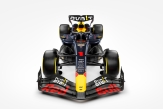
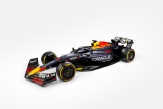

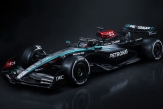
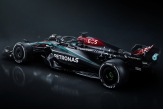


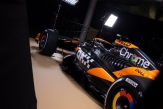

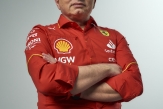
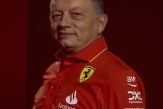
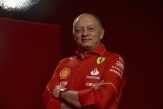

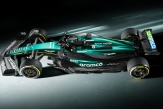




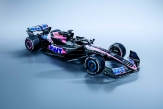
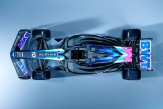

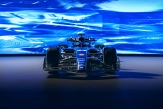
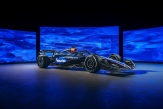
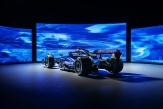

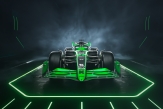


15/04/2024 от Огнян Тенчев (drJeckyll), няма коментари